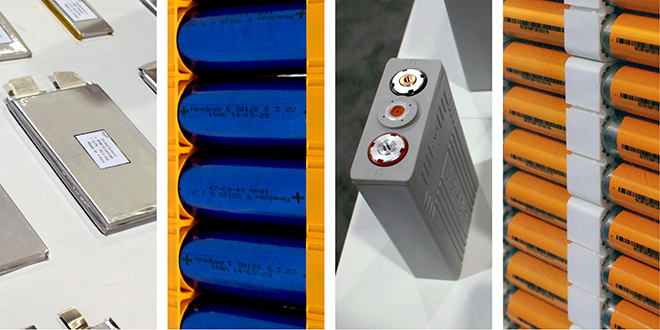Batteries are wonderful inventions, but like so many things in life, they don’t last. With every charge and discharge cycle, a battery’s capacity is reduced, until eventually it becomes inadequate for its application.
“Why does this degradation occur?” muses Northwestern University’s Christopher Wolverton. “In many cases, something probably happened to the cathode.”
Wolverton has developed a new computational design strategy that can pinpoint optimal materials with which to coat the cathode of a lithium-ion battery, protecting it from degradation and extending the battery’s life.
In “High-throughput computational design of cathode coatings for Li-ion batteries,” published in Nature Communications, Wolverton, Muratahan Aykol and colleagues explain that a cathode is typically composed of a compound containing lithium and oxygen. When the battery’s electrolyte decomposes, it can release hydrofluoric acid, a highly reactive substance that can attack the cathode. This could be one reason why the battery loses capacity over time.
“A coating could serve multiple functions: it could provide a barrier around the cathode, preventing attack from hydrofluoric acid,” Wolverton said. “Or a coating could preferentially react with the hydrofluoric acid, so there’s none left to react with the cathode.”
Earlier in his career, Wolverton developed the Open Quantum Materials Database, which contains information on more than 470,000 compounds. Wolverton’s group scoured the database in search of materials that could be potential barriers to or scavengers of hydrofluoric acid, and ultimately identified 30 top candidates.
“Having a massive database at hand allowed us to find the products of very complex, previously unexplored chemical reactions that determine the coating’s effectiveness,” said Aykol. “Not only can we unveil a list of promising functional coatings, but we are helping our experimental colleagues target their resources to the best candidates.”
Current methods of searching for cathode coatings are slow and limited. Exploring every combination of materials can result in millions, or even billions, of possibilities, far too many to test experimentally.
“There has never really been a design strategy for these coating materials,” Wolverton said. “Computationally, we can quickly screen the vast landscape of possible material combinations to pinpoint 25 compounds that are potentially very promising. Now, 25 is a more manageable number that you could test experimentally.”
Source: Northwestern University



















































